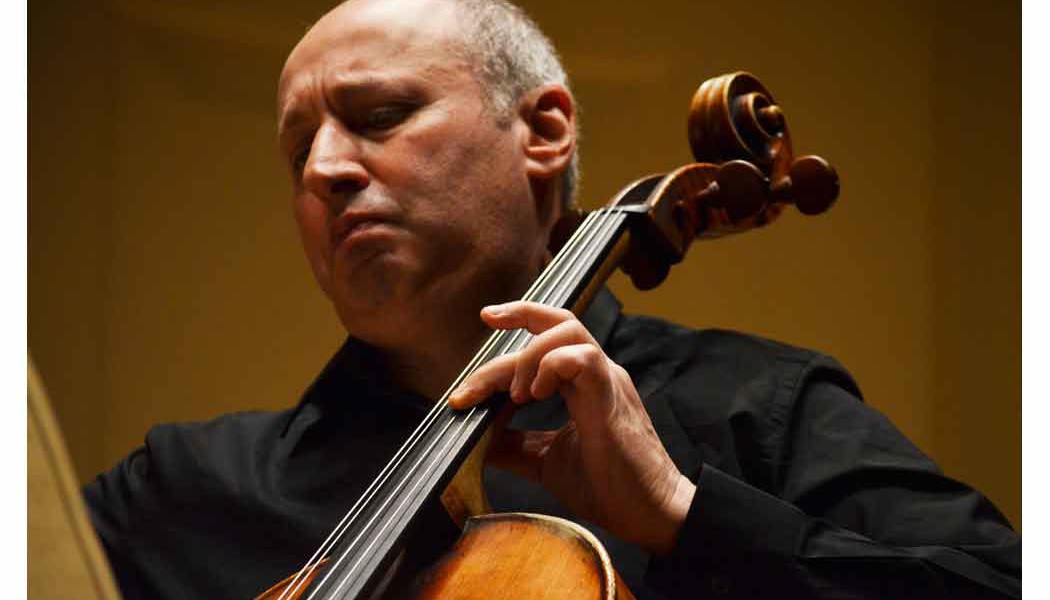Tempo Trapezio CD in Review
Tempo Trapezio CD
Misha Quint, cello
Svetlana Gorokhovich, piano
Blue Griffin Recordings BGR323 (also available on iTunes)
Misha Quint has recorded a wonderfully diverse array of works on his new CD, Tempo Trapezio. His pianist, Svetlana Gorokhovich, provides much more than accompaniment, as she interweaves her intermittent solo passages with subtlety and—when called for—real virtuosity. Together, they make an impressive pair; the notes are all there, and they play with a solid unity throughout. Yet, more than just excellent ensemble-work, they seem to identify with each composer on this disc in a personal way.
Thomas Fortmann’s Sonata for Quintcello, premiered at Weill Recital Hall at Carnegie Hall in 2014, is a funny play on words, with the cellist’s name obviously inserted, but also indicating the work’s prevalent usage of the perfect fifth interval. What would the title be if arranged for string quintet? No matter; the work is terrific writing in its own right. Clever and comical, the work’s eclecticism includes hints from the rock era—a simulation of guitar open fifths—plus music that points to Schoenberg and the twelve-tone school in the slow movement. Mr. Quint handles all the technical demands with ease.
Krzysztof Penderecki’s Per Slava—a Rostropovich dedication (for those who are unaware of the legend’s nickname) is also a demanding piece which deserves more performances and is well-interpreted here. The first notes depict Bach’s name: B—A—C—H (Bb-A-C-B♮), and this permeates the six minutes of music. One might therefore expect some Bach to be included on this disc, but one will have to wait for Mr. Quint’s next album. And it would be interesting to hear the Penderecki paired next to a Bach Suite in recital (no doubt, Mr. Quint has already done that or thought of the idea.)
Also included on this uniquely-selected program is Richard Strauss’s early Cello Sonata in F major, Op. 6 (1880-1883). Like Brahms’ Op. 99 (1886), F major has proven to be a winning key for a cello sonata. Brahms must have been impressed with this early cello sonata—to the point of writing one in the same key three years later? Brahms and Strauss still engaged artistically during this period, and Brahms was somewhat of a mentor before Strauss became a deep-seeded Wagnerite and anti-Brahmsian. What a wonderful work this Strauss is- this is not by any means a student work. It makes great demands on the cellist and pianist. One can hear the charm and devilish nature of his future Til Eulenspiegel in its strands, but more importantly, it is easy to notice that this work shows the hand of a young master. Both Mr. Quint and Ms. Gorokhovich play with passion and elegance here. The tempos and transitions are paced and timed admirably—the phrasing always engaging; not a note goes by without meaning or an arrival-point in mind.
Schubert’s Impromptu is recorded well and is exquisitely shaped. Works by Stravinsky: the Pas de Deux from Divertimento and the Chanson Russe are stellar additions to this disc. They are presented with a vast range of dynamics and color; at times humorous and graceful—at other times, wild and bombastic. If purchasing on iTunes, I would have to recommend getting the album and not just the individual selections—since the Sonata for Quintcello is only available with an album-only purchase. If purchasing individually, I would recommend the Strauss and Stravinsky works as absolute must-haves on your playlist. You will want to enjoy listening back and forth, again and again.

